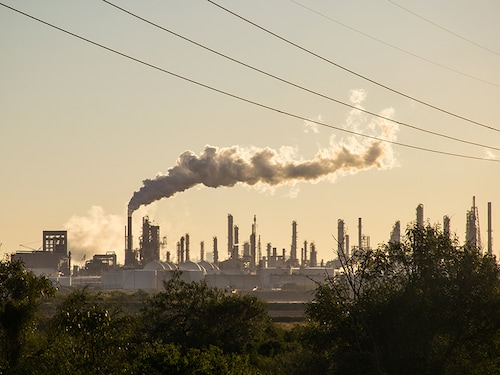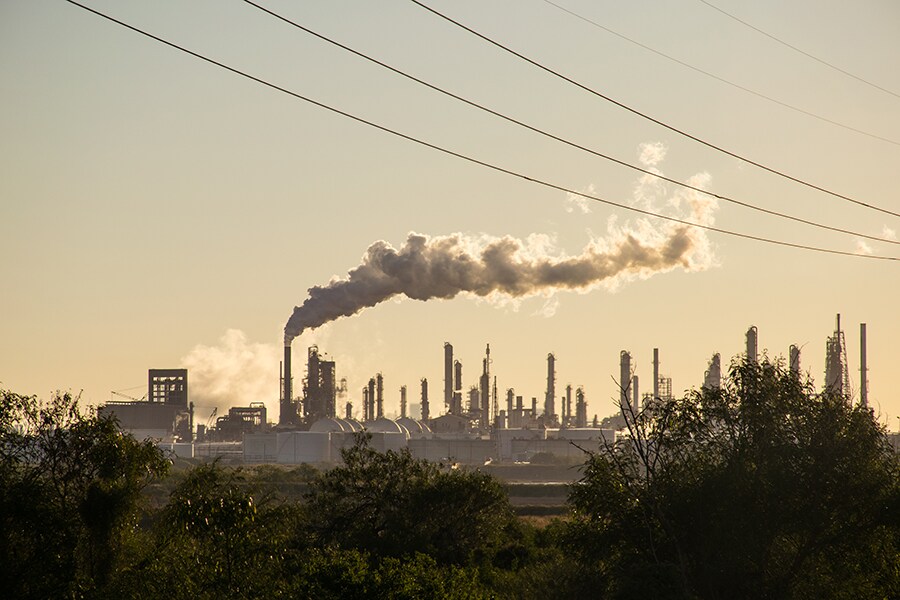Climate change: The big test for public and private regulation?
Recent decades have seen many private regulatory initiatives emerge in areas where states appeared to be incapable of creating international regulation


 Image: Shutterstock [br]Growing concerns about anthropogenic climate change have led to the rapid development of greenhouse gas regulations. A striking characteristic of these regulations is that they are often promulgated by businesses and NGOs, rather than states. Private regulation is quite common nowadays, but in the case of climate change the stakes are higher than ever, and special dynamics between private and public regulation have appeared. Here is a brief overview of greenhouse gas regulation, along with a forward-looking view of how it may evolve.
Image: Shutterstock [br]Growing concerns about anthropogenic climate change have led to the rapid development of greenhouse gas regulations. A striking characteristic of these regulations is that they are often promulgated by businesses and NGOs, rather than states. Private regulation is quite common nowadays, but in the case of climate change the stakes are higher than ever, and special dynamics between private and public regulation have appeared. Here is a brief overview of greenhouse gas regulation, along with a forward-looking view of how it may evolve.
Back in 2012 an academic overview already identified no less than 68 (public-) private initiatives addressing climate change. One noteworthy example is the Science-Based Targets Initiative that helps companies set targets for reductions in greenhouse gas emissions that represent a “fair share” of the total reduction in emissions needed worldwide. Another interesting example, which can be applied in combination with the Science-Based Targets Initiative, is the Carbon Disclosure Project, one of the largest private standards for greenhouse-gas emissions reporting. Thousands of corporations now use these standards to communicate on this topic to investors, governments and other stakeholders.
The greenhouse-gas regulations field is further complicated by a plethora of public regulations created by nation-states and their joint institutions such as the European Union. A typical example can be found in the many carbon trading mechanisms that now exist, such as the EU emissions trading system. Add to this a multitude of local, national and international regulations focused on subsidies, taxes and other instruments to reduce greenhouse gas emissions, and the public and private kaleidoscope of climate change regulation is complete.
A pluralist and decentralized governance system for climate change?
This worldwide “patchwork” of public and private regulations engenders mixed feelings. Optimists point out that a decentralised and pluralist governance system can cater to many different interests and offer unprecedented opportunities for experimenting with new forms of governance. Pessimists fear that this plurality affords the biggest greenhouse gas emitters ample opportunity to “shop around” for the most convenient regulation, and that private rules are unlikely to be monitored and enforced strictly enough. At the same time, the majority agree that economic globalisation has sidelined national regulators and that the prospects for effective worldwide public regulation are dim. In this context private climate change regulation may start to look promising.
Private regulation for sustainability – climate change and other issues – is not really new. Recent decades have seen many private regulatory initiatives emerge in areas where states appeared to be incapable of creating international regulation. The textbook example is the Forest Stewardship Council. Comprising NGOs and businesses in the wood-producing and processing industry, this private regulatory initiative fills “governance gaps” in international public regulations in order to protect (particularly tropical) forests. This is just one of the thousands of private regulatory initiatives to have emerged in recent decades. The usual explanation for these burgeoning “soft law” initiatives is that the absence of public regulation is problematic for businesses, in that their legitimacy in the eyes of consumers and others depends on their complying with appropriate law. In the absence of laws, both businesses and NGOs fill these “governance gaps” with private regulation, and thus create frameworks that can provide businesses with legitimacy.
The dynamics of public and private regulation for climate change
In the case of climate change the story seems to be somewhat different: here the absence of public regulation is not necessarily what drives private regulation. Instead, the two categories of regulation seem to be developing simultaneously. The reasons for businesses to engage in private regulation include a) when stricter public regulation is expected, private regulation can help companies prepare for its introduction, b) by developing private regulation, corporations have an instrument with which to influence the public rule-making process, and c) successful private regulation may convince public regulators to leave certain regulatory aspects to the discretion of private parties.
Indeed, since its inception in 1995, the United Nations COP conference has brought together ever-more businesses eager to participate in exchanges about climate change regulation (the 2015 edition that resulted in the Paris Climate Agreement being the most famous). For example, the Carbon Pricing Leadership Coalition emerged on the margins of the COP conferences. This initiative of states, businesses, and NGOs geared to jointly supporting the development of effective emissions trading and/or carbon taxation solutions, is an attempt to “orchestrate” the cacophony of existing rules. Orchestration involves, first, accepting a plurality of public and private regulatory initiatives, and, second, combining these regulations in order to achieve results that public or private regulation cannot deliver alone.
The (short) history of public and private rule-making shows that these two categories of rules have qualities that may in principle serve to mutually reinforce each category. Private regulation can be fairly easy to adapt, is promulgated by constituents with an in-depth understanding of the industry, and may earn the support of private parties more easily. Public regulation can stimulate implementation of private regulation (public tenders often refer to private sustainability tenders, for instance), set targets for private regulation to achieve, make private rules mandatory and enforce implementation of private regulation.
The future of public and private climate change regulation?
As this brief overview demonstrates, many of the components needed for effective climate change regulation are under development. Orchestrating them will depend on a complicated interplay that requires continued international public negotiations, NGOs to play an active role and efforts to leverage businesses’ knowledge and influence in their industries. Nevertheless, given the present fragmented state of climate change regulation, the limited abilities of states to create a global framework and the disparate interests involved, this approach is worthy of consideration.
Utopian though it may sound, successful examples of such public-private interplay can be found in other regulatory contexts. A prime example is the set of IFRS standards that now define the financial information corporations are required to disclose in their annual reports. IFRS regulation was originally developed by the private International Accounting Standards Board, before being made a legal requirement by public entities in EU member states and in many other nations around the world. In fact, this interplay has helped harmonise different accounting regimes. It is obviously hard to predict the future for climate regulation. Strong public initiatives will surely be pivotal, but smart orchestration of public and private regulations could be employed to achieve the best of both worlds.
- Bastiaan Van Der Linden, Associate Professor of Corporate Social Responsability & Programme Director of the EDHEC MSC IN GLOBAL & SUSTAINABLE BUSINESS, EDHEC Business School
First Published: Apr 25, 2019, 17:54
Subscribe Now